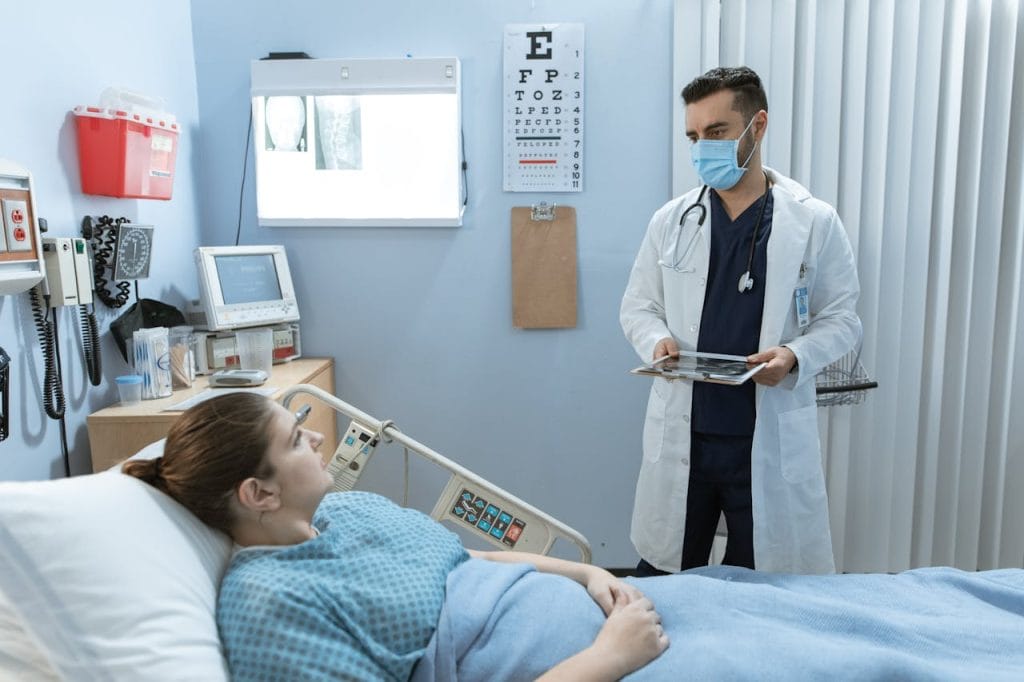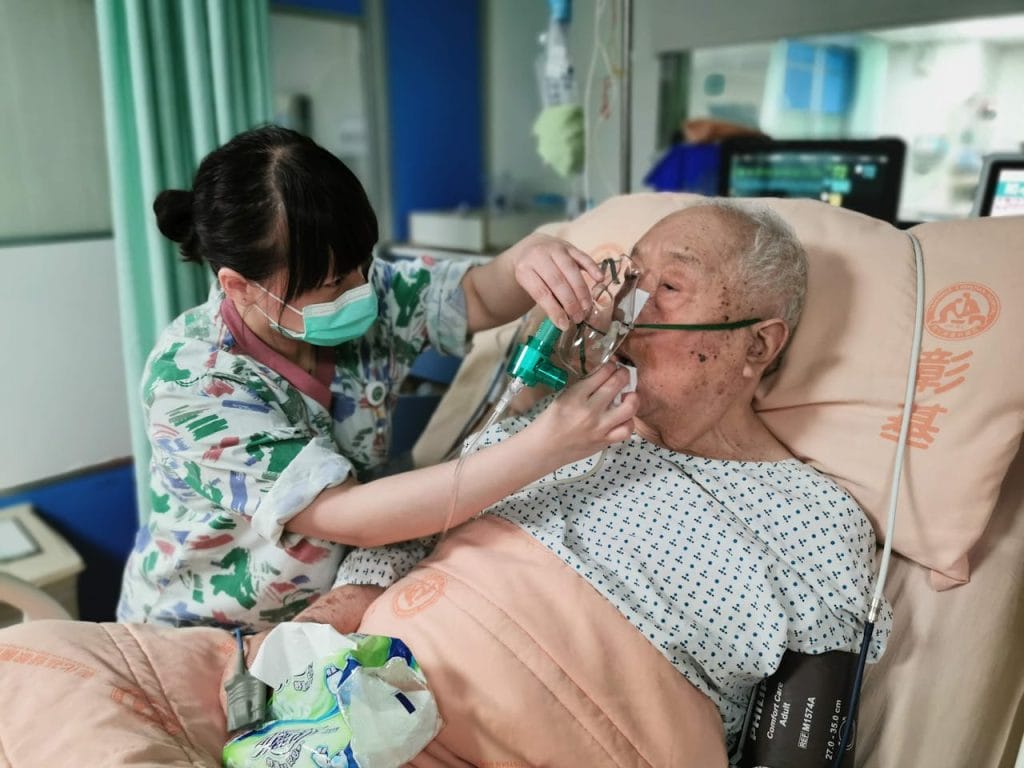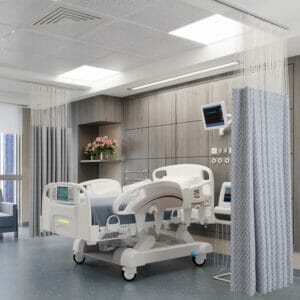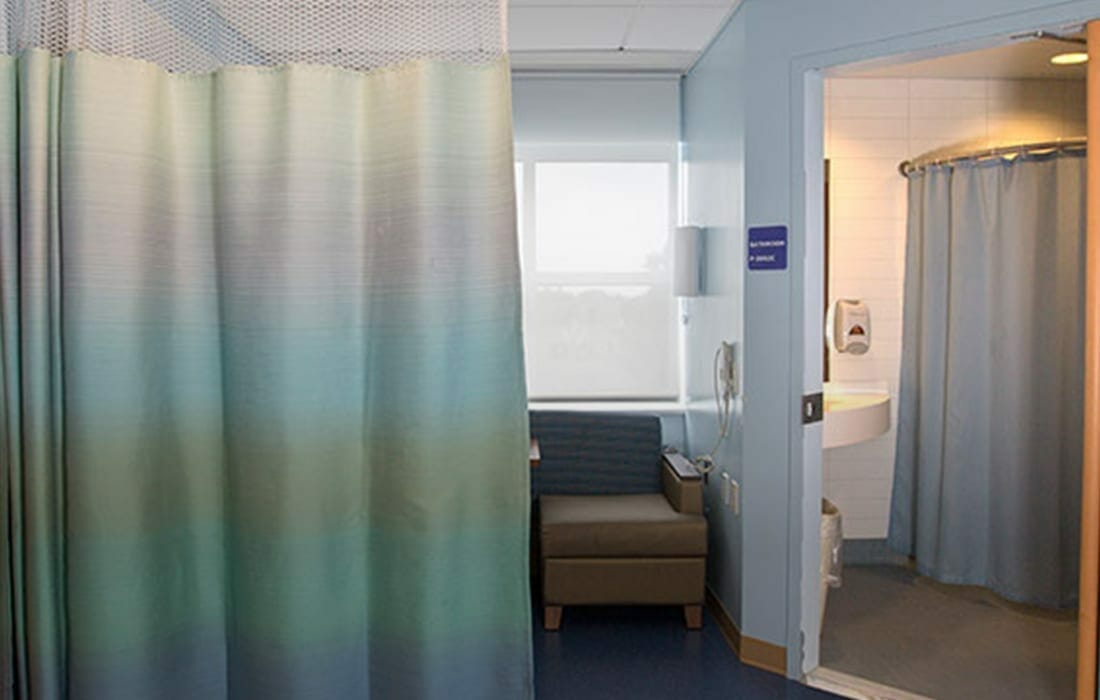In hospitals and healthcare facilities, cleanliness is not just a preference—it’s a necessity. Every surface, from bed rails to medical equipment, must meet strict hygiene standards to prevent healthcare-associated infections (HAIs). However, one frequently overlooked aspect of hospital sanitation is hospital curtains. These curtains, which provide patient privacy and separation in shared spaces, can harbor bacteria, viruses, and other harmful pathogens if not cleaned regularly.
So, how often should hospital curtains be cleaned? The answer depends on various factors, including patient risk level, hospital policies, and the type of curtain material. In this blog, we will explore the best cleaning practices for hospital curtains, recommended cleaning frequencies, and how hospitals can improve their infection control measures.

At HAIGuard™, we specialize in high-quality hospital curtain solutions that help healthcare facilities maintain privacy, comfort, and hygiene. Let’s dive into why cleaning hospital curtains should be a top priority and how often they should be maintained.
1. Why Cleaning Hospital Curtains is Essential
1.1 Hospital Curtains: A Hidden Source of Contamination
Hospital curtains are constantly being touched by healthcare staff, patients, and visitors. They also serve as barriers between different patients, making them susceptible to contamination. Studies have shown that bacteria such as MRSA (Methicillin-resistant Staphylococcus aureus) and C. difficile (Clostridium difficile) can survive on hospital curtain surfaces for days or even weeks.
Without proper cleaning and replacement schedules, these curtains can become a significant source of infection spread within medical facilities.
To learn more about the impact of curtain hygiene, check out our blog:
➡️ The Importance of Hospital Curtain Cleaning: Ensuring a Hygienic Healthcare Environment
1.2 Compliance with Infection Control Guidelines
Healthcare facilities must comply with infection control protocols set by the Centers for Disease Control and Prevention (CDC) and the World Health Organization (WHO). These guidelines emphasize the importance of regular cleaning schedules for all hospital surfaces, including privacy curtains.
Maintaining clean hospital curtains ensures that healthcare providers meet regulatory standards and prevent legal or reputational issues associated with hospital-acquired infections.
1.3 Enhancing Patient Comfort and Safety
Clean hospital curtains don’t just prevent infections—they also contribute to a better patient experience. When patients see stained, dusty, or unclean curtains, they may lose confidence in the facility’s hygiene standards. Fresh, well-maintained curtains help reassure patients and create a safer, more comfortable environment for their recovery.
For more on how hospital curtains enhance patient care, read:
➡️ How Hospital Privacy Curtains Improve Patient Comfort and Care
2. How Often Should Hospital Curtains Be Cleaned?
The frequency of hospital curtain cleaning depends on several factors:
- Patient risk level (ICU vs. general ward)
- Curtain material (disposable vs. reusable)
- Hospital policies and guidelines
- Exposure to high-risk contaminants
Here’s a breakdown of the recommended cleaning frequencies based on different hospital settings:
2.1 Standard Patient Rooms and General Wards
- Cleaning Frequency: Every one to three months
- Reason: Curtains in general wards and patient rooms have moderate exposure to contamination but still require routine cleaning to prevent bacterial buildup.
- Best Practice: Regular laundering or replacement with fresh curtains.
2.2 Intensive Care Units (ICUs) and High-Risk Areas
- Cleaning Frequency: Every two to four weeks or immediately after patient discharge
- Reason: ICU patients are more vulnerable to infections, requiring stricter hygiene protocols. Curtains in these areas come into contact with multiple high-risk patients, increasing contamination risks.
2.3 Emergency Rooms (ERs)
- Cleaning Frequency: Every two to four weeks or after high-risk exposure
- Reason: ER curtains are frequently handled by multiple healthcare workers and exposed to bodily fluids, increasing the risk of contamination.
2.4 Operating Rooms and Isolation Units
- Cleaning Frequency: After each surgical procedure or patient discharge
- Reason: Operating rooms must maintain near-sterile conditions. Any contamination from curtains could introduce harmful pathogens to open wounds or immunocompromised patients.
2.5 Maternity and Pediatric Wards
- Cleaning Frequency: Every one to two months (more frequently in high-risk cases)
- Reason: While maternity and pediatric areas may have lower exposure to serious infections, maintaining a clean environment is essential for newborns and young patients.
3. Best Practices for Hospital Curtain Cleaning
3.1 Using the Right Cleaning Methods
Hospitals typically use one of the following cleaning methods for reusable hospital curtains:

- High-Temperature Washing: Most reusable hospital curtains can be laundered in industrial washing machines at high temperatures (160°F or higher) to kill bacteria and viruses.
- Chemical Disinfectants: Some curtains require specialized antimicrobial treatments to eliminate bacteria and prevent mold growth.
- Steam Cleaning: A method that effectively disinfects hospital curtains without harsh chemicals.
3.2 Disposable Hospital Curtains: A Hassle-Free Alternative
For facilities that want to minimize the risks of cross-contamination, disposable hospital curtains are a great solution. These curtains are designed to be replaced regularly, eliminating the need for laundering and reducing the workload on hospital staff.
Find out why disposable curtains are becoming the gold standard in infection control:
➡️ Why Disposable Hospital Curtains Are Revolutionizing Infection Control
3.3 Training Hospital Staff on Curtain Hygiene
Ensuring that hospital curtains are cleaned on schedule requires training healthcare staff to:
✔ Identify when curtains are soiled and need replacement
✔ Follow hospital policies for cleaning and disposal
✔ Handle curtains properly to prevent cross-contamination
3.4 Implementing Quick-Change Track Systems
Modern hospital curtain tracks make it easier to replace curtains efficiently. Quick-change track systems allow healthcare staff to remove and replace curtains without taking down the entire track, reducing downtime and improving hygiene.
To learn more about how hospital curtains play a key role in privacy protection, read:
➡️ The Role of Hospital Curtains in Ensuring Patient Privacy
4. Why Choose HAIGuard™ for Hospital Curtain Solutions?
At HAIGuard™, we specialize in high-quality, easy-to-maintain hospital curtains designed for infection control, durability, and efficiency. Our product offerings include:
✔ Antimicrobial Curtains: Engineered with built-in bacterial resistance
✔ Disposable Hospital Curtains: A hassle-free solution for infection control
✔ Washable Privacy Curtains: Durable, flame-resistant, and easy to clean
✔ Quick-Change Curtain Tracks: Effortless curtain removal and replacement
By choosing HAIGuard™, healthcare facilities can improve patient privacy, hygiene, and operational efficiency while reducing the risk of infections.
Hospital curtains are essential for privacy and infection control, but they must be cleaned frequently and properly to maintain a hygienic healthcare environment. Depending on the hospital setting, curtains should be cleaned every few weeks to a few months, with high-risk areas requiring more frequent replacements.

By following best practices for hospital curtain cleaning, using disposable curtain solutions, and investing in quick-change track systems, healthcare facilities can ensure a clean, safe, and comfortable environment for patients.
For premium hospital curtain solutions that enhance privacy, hygiene, and efficiency, HAIGuard™ is your trusted partner. 🚑✨








